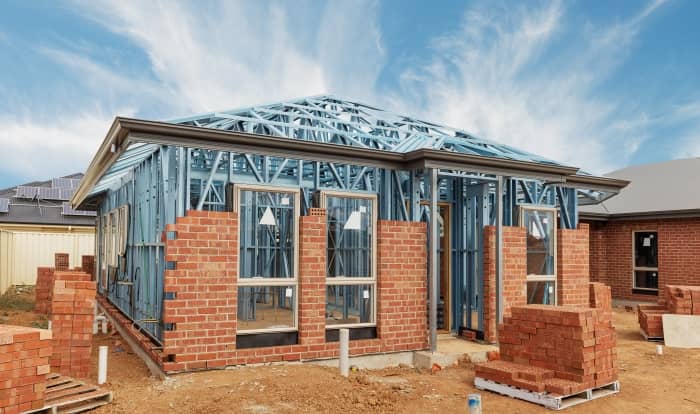Although usually naturally occurring and deemed necessary for rejuvenating particular environments, bushfires can be extremely dangerous. The peak fire season in Western Australia begins in late August, generally lasting about 27 weeks.
According to GlobalForestWatch.org, a total of 19,157 fire alerts were reported from 2 May 2022 to 1 May 2023. Although the numbers appear normal, with no increase for the past decade, WA lost 44.5kha of natural forest in 2021 due to bushfires, generating over 10 metric tonnes of carbon dioxide emissions.
A huge problem with bushfires is their rapid spread, especially in favourable weather conditions. Firefighters often find it difficult to control and contain the fires, making bushfires incredibly destructive to homes, buildings, and infrastructures.
If a bushfire reaches your home, it can ignite flammable materials, including roofs, siding, and wooden structures. You can minimise the risk of bushfire damage by taking the following proactive measures:
1. Stay Informed about Bushfire Warnings from Relevant Authorities
You can visit government websites like the Department of Fire and Emergency Services to get updates regarding bushfires and other emergencies. DFES also provides warnings and recommendations, so you know what to do in case of a bushfire. You may be interested in registering for alerts from DFES, which will be delivered via SMS or email.
Head to Digital Earth Australia Hotspots to see bushfire hotspots within the last 30 days. Bushfire Attack Levels can give you more information about the potential exposure of certain buildings to bushfires by considering local topography.
2. Clear Vegetation
Simple pruning and trimming can significantly reduce the occurrence of a bushfire near your home. Watch out, especially for overhanging structures, including tree branches close to power lines. Make sure to remove them, mainly if they appear to be dead or dry, as they can catch fire easily.
Aside from dry and dead branches, remove leaf litter, shrubs, and dry grass, as well. Clear the fences and the area surrounding your home to reduce fuel load (flammable materials). Doing so also generates a defensible space around your property.
Clearing vegetation also breaks up the continuity of flammable materials. You essentially create gaps that slow down the spread of fire. In some instances, these gaps can completely stop advancing fires. This space is beneficial for large properties. At the same time, you’re providing easy access for firefighters.
3. Maintain and Clean Gutters
Another important preventative measure for bushfire-proofing your home is ensuring you have clean gutters. But how can clean gutters help, you ask? During a bushfire, embers or firebrands are carried by the wind. They can travel far and may reach your rooftops. Often, gutters are filled with flammable debris, such as dry leaves and twigs, which ignite easily if embers land on them.
The gutters should be cleaned annually, maybe more if you’re at risk of bushfires. You may want to install gutter guards or screens, which can reduce debris build-up. Gutter guards keep water flowing freely, blocking twigs and tree leaves from invading the gutter system.
You can reduce the amount of gutter maintenance necessary if you frequently trim overhanging branches close to the roofline. This way, leaves will not fall right into the gutters.
4. Use Fire-Resistant Construction Materials for Your Home
Designing a bushfire-proof home is probably the most crucial step you have to take. It is expensive but surely worth every penny, especially if you think about the possessions and lives at stake. Research the various features and construction techniques that can greatly reduce the risk of fire ignition. Some materials are superior in enhancing your home’s resilience to bushfires. Here are our recommendations:
- Concrete: As a non-combustible material, concrete will not burn. It can even slow the spread of fire. Concrete has excellent heat resistance properties, including a high fire resistance rating. Therefore, it can withstand exposure to high temperatures longer than other materials.
- Brick: Another non-combustible material, brick can act as a barrier against flames and heat, offering your home a high level of protection.
- Fire-Resistant Timber: This product is impregnated with fire-resistant chemicals to reduce the material’s flammability. Such timbers are often used in decking and external cladding.
As with the materials, you should be wise in selecting the building site to help minimise exposure to bushfire hazards. Certain factors, such as vegetation, topography, and wind direction, can directly impact your home’s bushfire risk.
5. Build Your Home with Steel Frames
Apart from brick and concrete, steel is another material known for its non-combustibility, meaning it does not burn. Bushfires come with radiant heat and flames that can easily and quickly burn down your home. Using steel frames can provide a strong defence as fire tries to ignite and spread.
Steel frames also have excellent structural integrity, durability, and strength. Therefore, your home is less susceptible to damage, including fire damage. Additionally, steel frames do not strengthen the fire and suppress it. That’s why they are effective in combating ember attacks, especially compared to timber. Steel frames do not ignite even when exposed to burning embers.
One more reason why you should build your home with steel frames is that the material has a high melting point. Therefore, it can withstand high temperatures longer without melting and losing its structural integrity. Homeowners are provided with more time to evacuate and firefighters to quell the fire.
6. Ensure You Have an Adequate Water Supply on Your Property
Having enough water supply is more than critical for bushfire preparedness. Not only does it help make firefighting efforts easier, but it also helps protect your property in case of a fire.
Whilst we recommend that you leave the firefighting to professionals, you can save your home on your own when the fire is still manageable. That’s possible when you have an adequate water supply, such as an independent water source that does not rely on the mains water supply. For one, bushfires generally affect water pressure. You may even experience a water supply interruption, which can be a significant inconvenience during a bushfire. However, having well water, a dam or even a water tank can be a lifesaver.
Aside from sufficient water supply, you should also make sure it is easily accessible. You will often need appropriate pipework or outlets, which should be placed smartly in and around the property. It helps if you have already cleared the access paths to your water source by removing vegetation and other obstacles. To assist firefighters further, you may want to have well-marked water sources using visible signage. That way, they can locate available water supply during an emergency.
Other Things That Can Help
You may want to prepare an emergency kit with all the essentials, such as torches, first aid supplies, batteries, and a list of your emergency contacts. If you store valuables and important documents in your home, be sure that they are kept in a fireproof safe. Otherwise, it makes sense to store them securely offsite, particularly in an area that is not prone to bushfires.
Finally, you should always have an evacuation plan, no matter how confident you are with your bushfire-proofing strategies. Be sure to go over the plan with the entire household, allowing everyone to familiarise themselves with routes.




